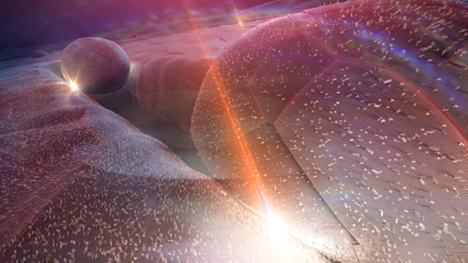
Every light wave is characterized by its frequency and the human eye can detect frequencies between 400 and 750 trillion Hz (or terahertz, THz), which define the visible spectrum. Cell phone camera light sensors detect frequencies down to 300 THz, while detectors used for internet connections through optical fibers detect at 200 THz.
At lower frequencies, the energy transported by light is insufficient to trigger photoreceptors in our eyes, missing the rich information available at frequencies below 100 THz, the mid- and far-infrared spectrum
Scientists at EPFL, Wuhan Institute of Technology, the Valencia Polytechnic University, and AMOLF in the Netherlands, developed a new way to detect infrared light by changing its frequency to that of visible light. This extends the “sight” of commonly available and highly sensitive detectors for visible light far into the infrared. The breakthrough is published in Science.
Researchers added energy to infrared light using tiny vibrating molecules. The infrared light is directed to the molecules where it is converted into vibrational energy while a laser beam of higher frequency impinges on the same molecules to provide the extra energy and convert the vibration into visible light. The molecules are sandwiched between metallic nanostructures that act as optical antennas by concentrating the infrared light and laser energy at the molecules.
Original Release: Eureka Alert
